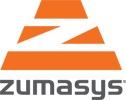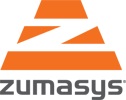jBASE
What is jBASE?
jBASE is a database and a set of programs and libraries that allows normal MultiValue (MV) applications to become native Windows, Unix or Linux programs. All of the traditional MV features are supported, including BASIC, Proc, Paragraph, Query and Dictionaries (Pick and Prime style).
What are the benefits of jBASE?
Because existing MV apps are converted to native executables and shared objects, they run fast and take advantage of the latest compiler optimizations available for Windows, Unix and Linux platforms.
Flexible licensing models support cost-effective application deployment for traditional character-based applications and include models suited for efficient deployment of web and graphical-based applications.
A key differentiator is that jBASE architecture tends to make sense to technical hires who may not have prior MV experience. jBASE organizes itself much like other mainstream applications, with full support for pathing and threading. Because it is native, business objects created in jBASE, even those based on legacy code, can be wrapped with other languages. jBASE is a platform that respects the investments made in custom-built legacy apps while allowing non-MV programmers to build next-generation applications using the latest design tools and methods.
jBASE also has one of the lowest support and maintenance costs among enterprise-level MV databases.
Who actually controls jBASE?
In 2015, Zumasys purchased the jBASE intellectual property and development from Temenos, as well as jBASE sales and support from MPower1. Zumasys now controls and markets jBASE internationally with full time developers located in England and North America. jBASE interested us not just because of its worldwide install-base of loyal customers but also because it is a technology that will utilize the Zumasys Cloud to help those customers move to a SaaS business model. We can serve up MV applications running on a multi-tenanted database architecture with unrivaled price and performance and include unique features such as browser-based access.






